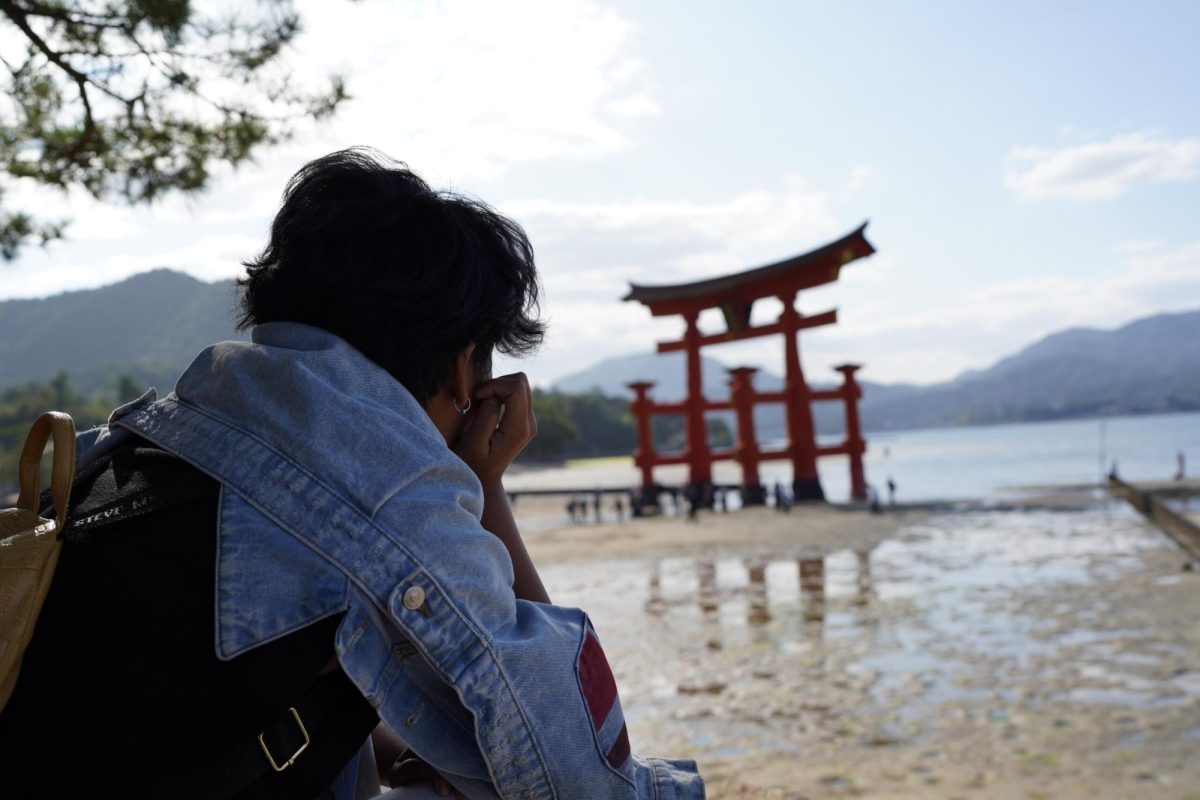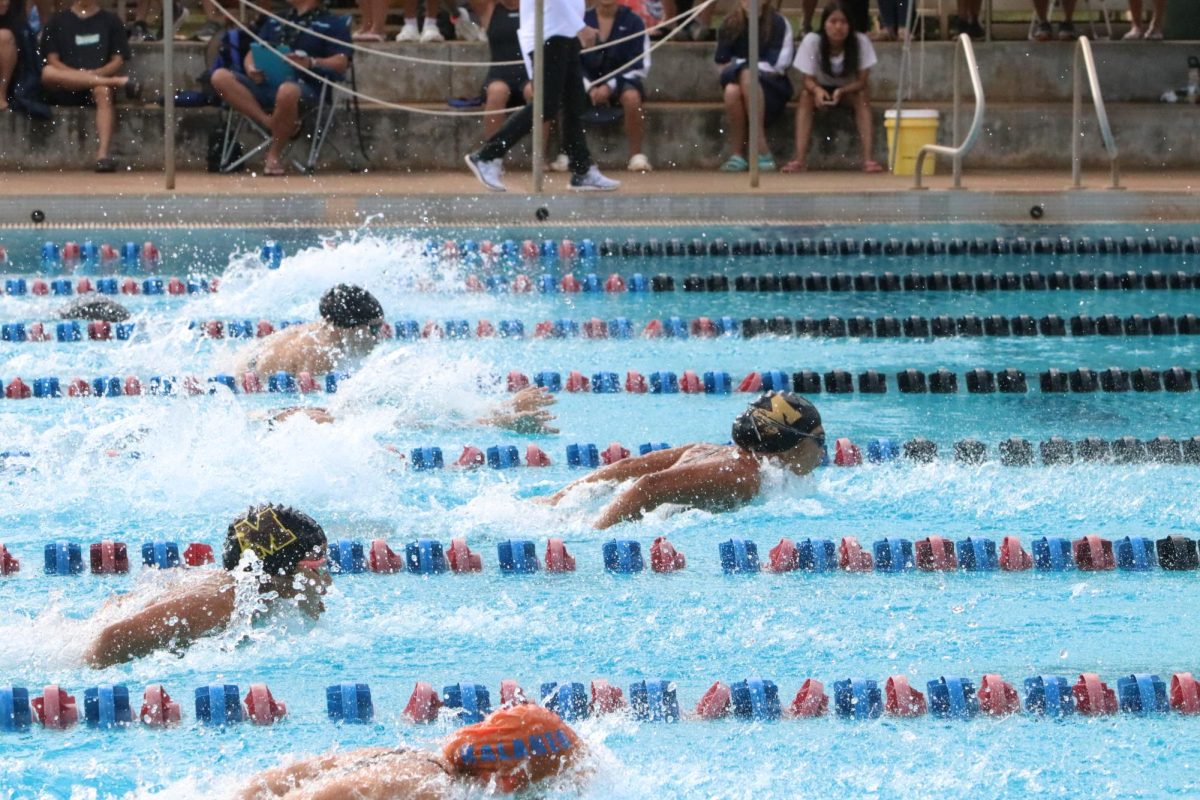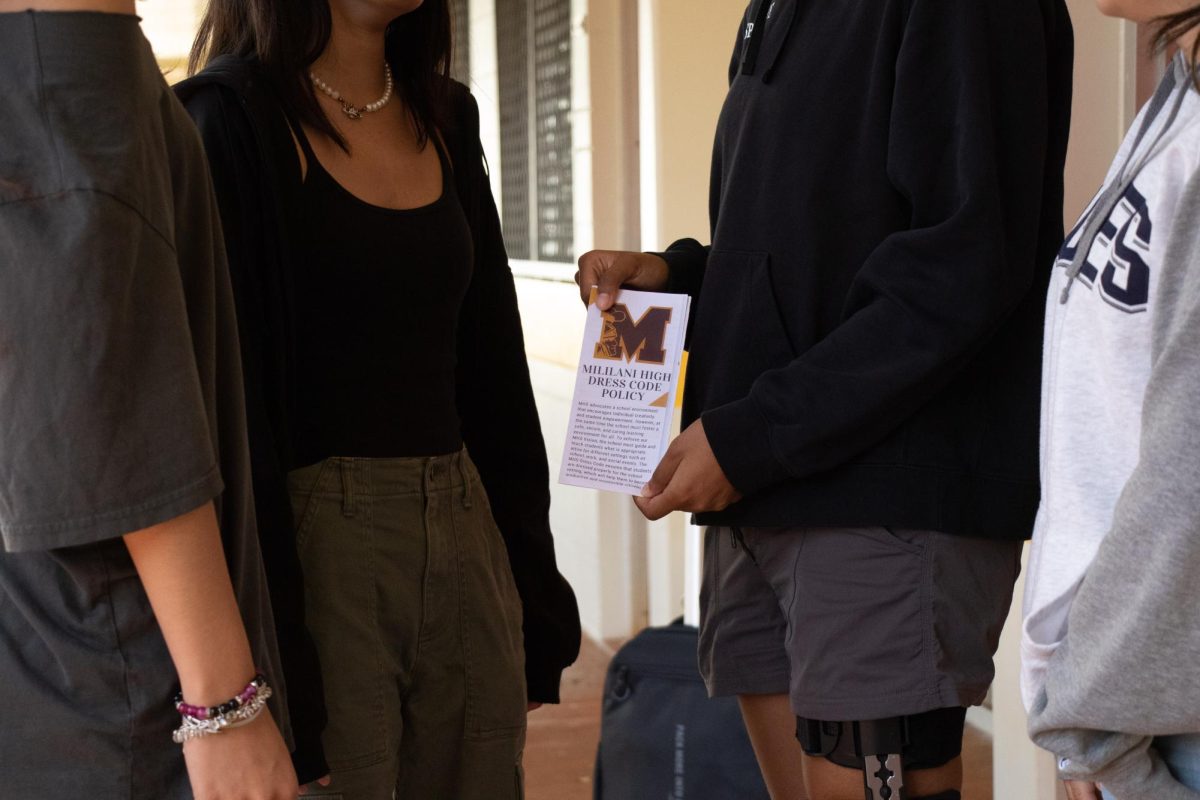Past, Future Join In “Shank’s Mare”
October 5, 2017
Developed over hundreds of years, Japanese puppetry has influenced culture for generations. Behind each move, each performance, are years of practice and tradition that has been diligently refined into the captivating and precise performances seen today. “Kuruma ningyo,” meaning cart puppetry, is a distinct style characterized by one puppeteer controlling the arms, legs, and head of the puppet while rolling around on a small cart. This form traces back 160 years ago to Hachioji, Japan and has been passed down to fifth generation Master Puppeteer Koryu Nishikawa V. MHS alumnus and puppet artist Tom Lee, in collaborative project with Nishikawa, created “Shank’s Mare,” a story that combines the traditional Japanese puppetry style practiced by Nishikawa with the more western style of Tom Lee. After shows in Japan and the continental U.S., “Shank’s Mare” toured throughout Hawaii, premiering on Oahu on Oct. 1.
“My goal with (“Shank’s Mare”) was to show the power and beauty of the ‘kuruma ningyo’ tradition, and also to show the possibilities for the future of that tradition. It was to both honor the tradition and ask what’s next in this modern day. Where can we take it next? So it’s really those two things, the past and future together,” said Tom Lee.
In 2005, the National Endowment for the Arts awarded Tom Lee a grant to travel to Japan and study traditional puppetry and theatre. While researching the well known and influential “bunraku” theatre, in which 3 people control one puppet, Tom Lee first heard of Nishikawa and the work he was doing. “I just went to Hachioji to meet (Nishikawa) and that’s when I described today, coming into Koryu-san’s theatre and he was doing a workshop with a room full of kids,” said Tom Lee, “Everybody was like 6, 7 years old. Everybody just rolling around on carts with swords and everything and (Nishikawa) was immediately like, ‘Yeah, try it. Go ahead.’”
Nishikawa became a mentor to Tom Lee, forming a close working relationship that has lasted over a decade later. “It’s so hard what (Nishikawa) does. But I think that’s what’s amazing about him—he’s also willing to share it. The last thing he said was, ‘I have my tradition and that tradition is like a square I cannot go out of because I have to preserve this tradition.’ But he said to me, ‘But you have the chance as a western artist to do something different, to take what I give you and to create your own path,’” said Tom Lee. “That was super generous for him to say that. Not like, ‘You got to do it this way, this way only,’ but really, ‘You want to learn, I will give you what I can and you can take it the next step.’”
After wishing to collaborate with Nishikawa for a long time, Tom Lee conceived “Shank’s Mare,” a dual story following a medieval astronomer and a swordsman turned bandit as they both near the end of their lives. “I wanted to find a way that we could make a show together but also knowing that we lived in two different countries. So we had to figure out a way to make the show together through email and sending each other ideas, and then when we got together we would have to rehearse it together. We had to kinda make the building blocks before that and that’s how we came up with this idea of two separate stories that we would try to link together,” said Tom Lee.
The western style, that can be seen in “Shank’s Mare” and that is used by Tom Lee, is a modern twist on the old traditions. “I would just say that we use (the puppets) in the ‘kuruma ningyo’ style with the cart. But sometimes other puppeteers will add on and all of a sudden we’re using it in the three person style and we’ll leave the cart and the puppet will begin to fly or move around the space in a different way. Also (the puppets) are just built differently, they are mostly wood but they’re built with a little bit more modern techniques. And the other thing I would say is that in my puppetry shows I also use a lot of video technology, so that’s another element of the show which is really important to help tell the story,” said Tom Lee.
By continuing to develop this style, Tom Lee has started to carry on the knowledge imparted on him by Nishikawa in an innovative way for the modern age. “Koryu Nishikawa V may be the last of the people that know this art and so Tom is actually carrying on something that is not even part of his own culture but because he became really interested it’s really a special thing,” said Tom Lee’s mother Marilyn Lee.
In preparation for the Hawaii tour of “Shank’s Mare,” Tom Lee and Nishikawa visited public libraries around the state, offering free workshops to expose people to Japanese puppetry—one being at the Mililani Hongwanji on Sept. 17. For many who attended these workshops it was the first time they had ever experienced this type of performance and had the opportunity to learn the mechanics that go into each movement and some of the history behind the style. “When I saw the master, how he had to make every move, the head—he was tied to the head of the woman—and the hands and the motion, it was very zen. It was like you were in another world because you’re just feeling how perfect he was doing it and how serious. Even the audience was hypnotized,” said Mililani Hongwanji President Rene Mansho. “I think it’s because Nishikawa-sensei, this art, this ‘kuruma ningyo,’ just draws you in. You just become a part of it.”
Tom Lee and Nishikawa continue to further their craft, from passing on their traditions to the next generation to reinventing them for the modern age and beyond. To learn more, go to www.tomleeprojects.com.
-#####-



